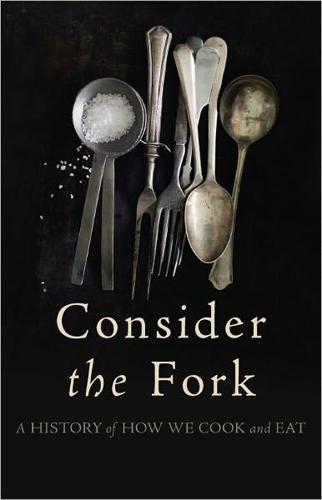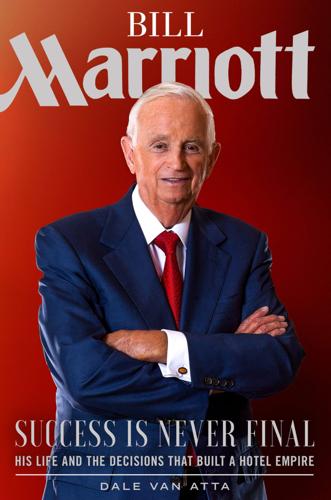
Consider the Fork: A History of How We Cook and Eat
by
Bee Wilson
Published 14 Sep 2012
Another rational kitchen of the early twentieth century was the Frankfurt Kitchen, created by the great Margarete Schütte-Lihotsky, the first female architecture student at the Vienna School of Arts and Crafts. Between 1926 and 1930, every apartment in the city of Frankfurt’s public housing program was fitted with an identical kitchen built to Schütte-Lihotsky’s specifications. Over a short space of time, more than 10,000 kitchens, all virtually indistinguishable, were built. These kitchens all had the same work surfaces and dish-drying racks, the same blue storage cabinets, the same waste disposal bin. The Frankfurt Kitchen may have been small—though no smaller than many kitchens in modern-day New York City, where competitive complaining takes place over who has the tiniest galley kitchen—but it had a remarkable characteristic.
…
Beyond that, they rebelled against the functional modernist aesthetic, and yearned for the clutter and mess of their old kitchens. It took time for the brilliance of the Frankfurt Kitchen to be acknowledged. Schutte-Lihotsky’s Communist beliefs meant that she did not get many commissions in her native Austria, even after the fall of Hitler. Finally, aged eighty-three, Schutte-Lihotsky was given the architecture prize of the city of Vienna. The Frankfurt Kitchen is now adored by architecture students, and it formed the centerpiece of an exhibition on kitchen technology at New York City’s Museum of Modern Art in 2011.
…
Walking around the exhibit, I saw New Yorkers, some of the most demanding consumers in the world, stop and stare admiringly at Schutte-Lihotsky’s humble aluminum storage drawers. This was something that the postwar American kitchen, for all its plenty, did not have. The Frankfurt Kitchen was a tiny galley, just a touch under 6.5 feet wide and almost 10 feet long. But the rational designers of the prewar years did not think that the ideal kitchen needed to be particularly spacious. Christine Frederick favored a room 10 by 12 feet, a little wider than the Frankfurt Kitchen but not much longer. Frederick knew that more space was a mixed blessing because it meant further for the person cooking to walk. The critical design factor was having tasks and equipment clustered together, encouraging a “chain of steps” around the room.

Bricks & Mortals: Ten Great Buildings and the People They Made
by
Tom Wilkinson
Published 21 Jul 2014
She was also a devotee of scientific management, and by conducting time-and-motion studies of women at work, she reorganised the kitchen to cut out wasted movement and optimise food production workflow, thus giving women time (she hoped) to take part in more politically and economically significant activities. Taking her inspiration from the kitchens of trains, the floor space of the Frankfurt Kitchen was long and narrow, the worktops were flush, the cupboards carefully placed, and the sink, bin, drying rack and oven all arranged to create an easy-to-clean assembly line for housework. But Lihotzky also translated another, more problematic element of Taylorism into her Frankfurt Kitchen. One of the major aims of housing reformers at the time was to separate working-class kitchens from living spaces, up to now united as Wohnküche –‘living kitchens’.
…
This attracted the attention of German architect Ernst May, who hired her in 1926 to help reconstruct Frankfurt – which was desperately short of housing – along socialist principles. Within five years he and his team had built a ‘New Frankfurt’ of 15,000 flats, the majority of them for workers. Lihotzky created her revolutionary Frankfurt Kitchen for these new homes. A good Marxist, Lihotzky saw the home as a site of production and women’s confinement there as an impediment to their education, employment and political engagement. She was also a devotee of scientific management, and by conducting time-and-motion studies of women at work, she reorganised the kitchen to cut out wasted movement and optimise food production workflow, thus giving women time (she hoped) to take part in more politically and economically significant activities.
…
They were separated from the life of the family and trapped in a tiny space – small for efficiency’s sake, but too small for company or supervising children. The very fittedness of these first fitted kitchens also deprived their users of the opportunity to personalise their surroundings, and many women complained that they missed their old-fashioned living kitchens. Like Ford’s factories, the Frankfurt Kitchen was an attempt to remake the workplace rationally, and to remake people as fitter, happier and more productive. But, just like Ford, Lihotzky ignored the texture of everyday life, thus whittling away at the things that made work bearable or interesting. Lihotzky also left fundamental questions about gender roles unasked, reinforcing the idea that housework is just for women.

B Is for Bauhaus, Y Is for YouTube: Designing the Modern World From a to Z
by
Deyan Sudjic
Published 17 Feb 2015
If Conran helped to make the kitchen a fashionable alternative to the living room, Margarethe Schütte-Lihotzky, a Viennese architect, and a lifelong revolutionary socialist, is paradoxically responsible for its underlying organizational principles. In the late 1920s, Schütte-Lihotzky combined egalitarianism with logic and devised the Frankfurt kitchen, a concept that has a claim to be understood as the mother of all fitted kitchens. As many as 8,000 examples were installed in the blocks of flats built for Frankfurt’s workers by the city. She was influenced by the theories of Taylorism, named for Frederick Taylor, the American inventor of the time-and-motion study, and by his determination to lay the production line out so efficiently that the worker became an integral part of it.
…
For the first time, Schütte-Lihotzky made this the centre of an architect’s vision. That the logic and discipline she brought to the design of the kitchen should become the starting point for the worktop, the built-in sink and the spice rack is one of the great ironies. There was not much space in the Frankfurt kitchen for sipping orange juice and eating bircher muesli on leisurely Sunday mornings. But it is precisely the combination of the domestic ideal and Schütte-Lihotzky’s celebration of efficiency that has made the kitchen the centre of the domestic world. And, as a result, it is the place in which the affluent can be persuaded to invest in more travertine floors, limed-oak storage units and stainless steel worktops per square inch than anywhere else in the home, even as the customs of shared meals and preparation of food atrophy.

Pocket Rough Guide Berlin (Travel Guide eBook)
by
Rough Guides
Published 16 Oct 2019
Everyday houseware, furniture and knick-knacks are mixed with the unusual, spanning the nineteenth century to the present day. Located on the top floor of a Kreuzberg apartment block, the museum is a design-fiend’s dream, with exhibits including Manoli ashtrays, Art Deco fondue sets and World War II memorabilia, all inside a room that’s modern and well organized. One of the latest attractions is the modular “Frankfurt Kitchen” designed by Viennese architect Margarete Schütte-Lihotzky in 1926 – the model for the fitted kitchen of today. The exhibition texts are in German and English, and you’ll also find a colourful and nicely curated giftshop near the entrance. Ramones Museum MAP Oberbaumstr. 5 Schlesisches Tor 030 61 28 53 99, ramonesmuseum.com.

Empire of Things: How We Became a World of Consumers, From the Fifteenth Century to the Twenty-First
by
Frank Trentmann
Published 1 Dec 2015
As power companies and producers learnt quickly, the benefits of gas and electricity and the goods they powered were not obvious. They had to be marketed. The first electric kitchen was exhibited at the Chicago World Fair in 1893. In inter-war Europe, some cities had ‘transparent restaurants’ to show diners how an electric kitchen worked.84 The masterwork of modern design was the Frankfurt Kitchen of 1926 by Grete Schütte-Lihotzky, the first professionally trained female architect in Austria. It was exactly 1.9 by 3.44 metres (70 square feet). In this mini-factory, everything was functional, from the electric range to the continuous work surface with height-adjusted cupboards. Storage chutes and pouring spouts saved the housewife from having to open doors and containers to get to sugar and flour; the containers were aluminium, except for the flour shovel, which was made of oak – the tannic acid kept away worms.
…
Ideal-home shows in inter-war London advertised American labour-saving devices, but continuous kitchen surfaces were equally lacking here; the L-shaped kitchen first appeared in 1949. Even in California, adjoining counters spread only slowly. In Paris, organizers at the annual Salon des Arts Ménagers found that pure functionalism did not go down well with the bourgeoisie: modern kitchens were flanked by Louis XV parlours and dining rooms.87 The Frankfurt Kitchen was the culmination of modern functionalist design. To people’s lives it was marginal. Barely 10,000 of its type were installed. For the vast majority of people (and housing associations) this cuisine Porsche was out of reach; it would have taken the average Frankfurt worker a year’s income to buy one.
…
M. 294 Feer, Arman: Poubelle de Jim Dine 636 Fei Hsiao-Tung 368 Fellini, Federico 515 feminists 142–3, 157, 228, 316, 323 Ferguson, Mr 127 Ferrero, Anna Maria 315 Ferrero, Michele, (‘Mr Nutella’) 611 Ferrero Rocher 611 Ferris, Elmer 501–2 Festival di Sanremo 351–2 Ficino, Marilio 35 Fidenza, Italy 585 film see also cinema: American 211, 307, 328, 347; censorship 312; children’s 489; company film 527; corruption through 216, 307; educational 215; feeding aspiration 282–3, 301–2; festivals 685; French films on French TV 353; Indian film portraying family, love and home comforts 382; in Iran 616, 617; length 213–14; local films 214; and migrants 214–15; mobile phones and personal film-making 465; photos and social networking 465; Tarzan films 312; and youth culture 312–13 finance capitalism 119 finance imperialism 160 Finland 12, 270, 319, 352–3, 509, 548, 558, 566; company leisure activities 531; debt and loans 431, 433; and the home 245, 419, 428, 643; localism 584–5; and religious identity 612; savings 364, 418, 419, 420, 421, 679; social spending 539; sports facilities 545; Sunday restrictions 478; tango 352–3 firm services see company services, and corporate-led consumption First World War 172, 237, 261, 274–6, 363; and China 299; and home science 256; legacies of 276–8; loggers in Pacific North-west during 524; radio and morse code 264; rent controls 243; and thrift 256, 277–8 Fischer, Emmanuel von 118 Fishof, Ohad 441 Fitoussi, Jean-Paul 539 flâneurs/flâneurie 194, 306, 310, 441 Florence 22, 23, 28, 29, 32, 36, 38; Platonic Academy 35; standard of living 72, 72 Flower, Raymond 513 food: and armed forces 543; banks 338–9; calories mattering more than cuisine 345; cheap food era (1975–2007) 564; company food 524–5, 531–2; cooking see cooking; and cultural divide 340; eating see eating; ethnic food and racial prejudice 600–601; exotic tastes in 58, 78–93, 120, 165, 579, 601; fair-trade see fair trade; family meals 14, 461; fast-food/convenience food 357, 493, 531, 544, 588, 622; global advance of Mediterranean cuisine 603; and GM opposition 585, 586; Indian food marketing 380, 601; Japanese 543, 585; kosher 600; meat see meat; migrant food cultures 596–602, 603–5; ‘national’ cuisines 597–8; NHS hospital meals 522; organic 581, 584–6, 605; packaging 622, 635–6; price drops and the erosion of class-based diets 587–8, 604–5; price protests 159, 278; prices in company stores 524; regional food and local networks 169–73, 580–88; school meals 543–4; Slow Food movement 442, 470, 580, 581, 587; spending on 338, 339, 340; state regulation of ethnic cuisine 603–4; status and ethnic food cultures 602; storage 651; trust in food system 584; uneven distributions of 573; waste 625, 626, 627, 629, 631, 644, 648–51, 682; and The Week-end Book 462 Food and Agriculture Organization (FAO), UN 573 football 347, 477, 617 Ford, Henry 227, 247, 411, 527, 634 Ford workers 247, 341 Fordism 247, 278 Fordlandia, Brazil 527, 528 fossil fuels 2, 669, 684 Foucault, Michel 188 framing 6, 7, 11–12 France/the French: 18th-century 22; advertising 173; and American culture 305, 306; army 167; Asian textiles 65; Bourdieu’s cultural map of French society 345–6; bourgeoisie 94, 165, 181, 225–6, 250, 345, 374; Chèques Vacances 533, 536; childcare 453; co-operatives 285; coffee 79, 165, 166; colonies 79, 82–3, 122, 132–3, 165, 172, 252, 347; comités d’entreprise 532–3, 534; communists 307; company services 532–3; consumer goods expansion 1954–75 301; cotton 67; credit 414, 416; discretionary and leisure time 452; domestic appliances 247; elderly people 507, 508, 511; elite and high culture 340, 345, 346; ethical shopping 569; families and generational bonds 520; film-making on mobile phones 465; firm clubs 531; free time activities of men and women aged 20 to 74 (1998–2002) 458–9; French films on TV 353; French Revolution 111–12, 113, 147; holidays 453; and the home 189, 243, 339, 453, 459, 643; household debt 409, 425; ICT 685; income share of the rich 436, 437; industrial revolution 161; and inflation 415; joie de vivre 455; law on French content of radio broadcasts 353; Ligue Sociale d’Acheteurs 155, 159; localism 586; luxury denunciation 100; luxury goods spending by millionaires 439; and Marshall Plan exhibits 307; misery U-index 454; mobile phones 464, 465; Napoleonic Wars 116; open trading 120; over-indebtedness 431; paper waste 644; Paris see Paris; pensions 542, 679; Popular Front 545; reading habits 460; recycling 639–40, 645; royal court 42; Royer Law (1973) 349; rural transformation of everyday life after Second World War 302; school hygiene 177–8, 189; servants 68; service sector 685; shops 351; silk export 67; smuggling 91, 162; social spending 537, 537, 539, 679; socialists 552; sport facilities and practice 545; standards agency, AFNOR 565; state relationship to consumers 551–2; students 496; sugar consumption 165, 166–7; sumptuary laws for clothes 40–41; Sunday restrictions 478; supermarkets 349; television 353, 411, 455; Third Republic 133, 172; time spent on different activities 454; tobacco 162; trade unions 532; travel for shopping, eating and hobbies 685; urban density 93; water supply 178, 182; and Waterloo 120; wine 169; women 453, 508; working hours 449–50 franchise 156–7, 283, 680 Francis, Neville 445 Frank, Robert 434 Frankfurt 187, 272, 321–2 Frankfurt Kitchen 249–50 Frankfurt School of Social Research 266 Frankfurter Zeitung 211 Franklin, Benjamin: Poor Richard’s Almanac 406 Fraser, Arthur 194 Frederick II, the Great 86–7 Frederick III 85 Frederick, Christine 222 free trade 136, 151, 158–9; exotic drugs and the era of 168; and female emancipation 157; force of trade liberalization 146, 161, 162–3; liberal empire of 91, 120–21, 122, 140, 141, 146, 161, 163–4, 167, 572; and mass consumption 162, 164; as original fair trade movement 572 Freecycle 654, 682 freedom: America’s cycle of democracy, social mobility and 237; of choice see choice; and consumption 289, 325, 419–20; and credit liberalization 419–20; democratic see democracy/democratization; of dress 111; emancipation from stuff 222; emancipation through things 135; female emancipation 157, 181, 196, 199, 222–3, 255–6; free labour 91, 122, 129; free unions 307 see also trade unions; and the French Revolution 111–12; Marxist delusion about 113; from Nazism 307; and personal lifestyle 274, 321; rights of 321; sexual 304, 325; and slavery see slavery/slaves Freetown 130 freezers 207, 254, 305, 348, 650, 664, 674 Freie Deutsche Jugend (FDJ) 333 Fresno, US 632 Freud, Sigmund 210, 627 Freudianism 284, 487 fridges 235, 240, 244, 247, 254, 257, 280, 283, 301–2, 307, 327, 331, 336, 337, 355, 365, 367, 368, 375, 378, 382, 436, 528, 591, 619, 647, 649–51, 653, 654, 664, 672, 673, 686, 687 see also freezers Friedjung, Heinrich 119 Friedman, Milton 5, 420, 421–2 Friedman, Rose D. 5 Friedrich-Ebert-Stiftung 392 friendly societies 206 Friends of the Earth 639 Friesland 75 Fromm, Erich 305, 434–5 Fugger, Hans 38 Fujin koron 256 Fulla dolls 618 functionalism 249–50, 270, 525 funerals 39, 48, 150, 193, 361, 382, 399, 592, 593 see also burials furnishings 36, 61, 181, 236, 240, 251 see also furniture; boom, late 19th century 224–5; carpets see carpets; and decor 47–8, 49, 117, 224, 225–6, 330, 348; luxurious 37, 60; mass market in home furnishing 224–5; and the polite lifestyle 107; in the Raj 145; reproduction paintings 226; and taste in line with one’s station 109; Venetian banning of luxurious 37 furniture 30, 31, 33, 61, 75, 108, 138, 226–7, 327 see also furnishings; American sales 279; bedroom 30, 31; functional 223; and identity 104; Louis XIV 251; paper 636; Soviet 327, 330 furs 23, 28, 37, 39, 138 fustian 66 Gaber, Giorgo 352 Galbraith, John Kenneth 7, 115, 254, 303–4, 414; The Affluent Society 7–8, 273, 302–3, 304, 305, 539, 678 Galen 84, 85 Gama, Vasco da 26 games 30, 467 see also sports; toys; board games 30, 36, 281; cards 22, 467, 471; drinking games 52; and elderly people 506, 508; in Japan 473; Muslim 618 Gandhi, Maganlal 298 Gandhi, Mohandas Karamchand, ‘Mahatma’ 296–8, 379–80, 389–90 garages, domestic 1, 661–2 garden waste 644, 648 gardening 4, 261, 456, 458, 462, 467, 507 Garstang, Lancashire 562 Garzoni, Tomaso 35 gas 4, 175, 176, 180–83, 248; boycotts of gas companies 183; cookers 178, 248, 554, 589; global trade in 683; lights 176, 178, 181–2; meters 176, 181, 183; profitability 182–3; stoves 176, 180, 181, 189 Gassman, Vittorio 315 gated communities 392 Gath, Alfredo 193 Gath & Chaves 193 Gaulle, Charles de 324 GDP see gross domestic product gender see also men; women: and cooking 257, 332, 375, 448, 481; division between female consumption and male production 110; eating roles 14; and free time 450, 457, 458–9, 469; hierarchies destabilized by Second World War 305; and housework 260, 447, 448, 483, 546; loosening of gender hierarchies amongst the young 313; and lust for things 197; and luxury 36; recycling of gender inequality through Motivational Research 316; and shopping 6, 156, 198–9, 200, 204, 332, 350; studies 324 General Electric 287, 500 General Motors 411 generations 484–521; adolescents see youth and teenagers; age-specific advertising and marketing 314–15, 485, 487, 489–90, 494–5, 517; age-specific clothing 486–7, 494–5; age-specific culture of pleasure 313; children (young) see children; consumption as the glue between 520–21; defined by recreation 506; the elderly see elderly people; leisure in middle age 483; and store colour-coding 486 Geneva 117 Genji, Japanese tale of 472 Genoa 23, 28, 29, 31 gentry see aristocrats/gentry geopolitics: and the Cold War 300–301 see also Cold War; consumption in context of 119–73; power as geopolitical hierarchy of things 132 George V 140 GEPA 567–8 German Labour Front 290–91 Germany: advertising 318–19; America and liberation from Nazism 307; bankruptcy 433; banks 416; beer 358, 559; brand explosion 169; children 491, 493; cinemas 215; clothing regulation 39, 41–2; co-operatives 275; Coal Council 276; coffee 166, 172; communal flats 323; and the consumer as source of national strength 275–6; consumer co-operatives 206; consumer complaints 558; consumer politics 275–6; consumer society 307; consumers in Weimar Germany 276; credit 409, 410, 414, 415–16, 433, 679–80; cultural state support 547; department stores 199–200, 200, 201–2, 479; discretionary and leisure time 452; East (GDR) 301, 327, 328, 330, 331, 332, 334–7, 438, 546, 645–6; educated bourgeoisie (Bildungsbürgertum) 416; elderly people 499, 507–9, 512, 513; ethical shopping criteria 567; fair trade 565, 566, 567–8, 574–5, 576–7; family relationships 521; films made in 312–13; First World War 275–6, 363 see also First World War; free time activities of men and women aged 20 to 74 (1998–2002) 458–9; fridges 302; GDP 12; German Jews 600; hazardous waste 652; holidays in Italy 603; home ownership 236; household cultural spending 548; household savings rate 420, 421; household waste 1980–2005 643; household wealth and debt 409, 425, 426–7; housewives’ organizations 275; Imperial 199, 276, 393, 394; industrialization 161, 166; inequalities 436, 437, 438; inflation 415; and the invasion of American consumer culture 306; Jewish-owned chains 196; kitchens 249–51; Kolonialwarenladen 164; Kritischer Konsum 576; leisure time in West Germany in the 1960s 301; localism 580, 582, 586; and the Marshall Plan 272; and migrant food cultures 597–8, 604; mortgage debt 425; national committee for consumer interests 275; Nazi see Nazism; outsourcing environmental burden 669; overindebtedness 431; pensions 422, 508–9; plastic waste 643; proportion of elderly in population 499; rag trade 628; recycling 639–40, 643, 644, 645, 646; restaurants 597–8, 601, 603, 604; savings 414–15, 422, 426, 430, 438, 679–80; and slavery 122–3; smartphones 465; Social Democratic Party 159, 433; social spending 537, 539, 541; socializing 461; standard of living exhibit 308; statesponsored sport and recreation 545; Sunday restrictions 478, 479; supermarkets 349; teenage market 495; theatre 466; trade unionists 278; urban density 93; urban water consumption 186; vending machines 278; wages 301; Wanderlager (discount stores) 205; waste generation lowering 640, 641; Weimar economic council (Reichswirtschaftsrat) 276; West 11, 12, 308, 309, 310, 312, 331, 414–15, 635–6; women 332, 457; working hours 449, 450, 451; youth riots 310; youth spending power 312 Ghana 131–2, 347, 579, 591, 614, 652, 653 Ghent 570 Giacomo da Sant’Andrea 49 Gibson, Mr (store manager) 202 Gide, Charles 155 Gierek, Edward 334 Gil, Gilberto 352 Gilchrist, Frank 524 Gilman, Charlotte Perkins 228 gin 80, 87, 124, 142, 315, 334, 478 Girl of My Dreams (Die Frau meiner Träume) 313 Girl Scouts 485 Giscard d’Estaing, Valéry 551–2 Glasgow 186, 209 glass 29–30, 222; beads 124–5; cabinets 202; and the democratization of desire 202; goblets 30, 33, 57; London production 58; mirrors see mirrors; plate 192; waste/recycled see waste: glass Glass Manufacturer’s Federation 639 Global e-Sustainability Initiative 686 globalization 121, 140, 155, 159, 552; and fair trade 568–9; forces of 193; global ethic of care 573, 584 see also fair trade; global expansion of ‘Italian’ coffee 173; global materialism 381; global spread of the department store 202, 204–5; global trading system 162; global waste trade 652–3; and local markets 141–2, 169–73, 583–4, 586; of Mediterranean cuisine 603; social movements opposed to 391; world merchandise trade in 21st century 683 goblets 30, 33, 57 Godbey, Geoffrey 444 gold 29, 35, 37, 40, 42, 131; bells 69; buckles 40, 41, 42; cloth of gold tissue 39; embroidery 25, 36; and Hoover 237; imperial flow 82–3; jewellery 34, 48, 381; lace 40, 63; recovered from scrap 653; thread 39, 70, 139 Gold Coast (West Africa) 124 golden age club movement 503–4, 505 Golden Age Hobby Show 505 golden mean 390 Golden Rule 572 Golden Tours, Long Beach 511–12 Goldie, George 133 Goldschmidt (factory) 638 Goldthorpe, John 343 good-luck charms 616 ‘good life’ 6, 12, 292, 302, 591, 614, 680, 681 Goodenough, Mr (engineer) 182 Göring, Hermann 291–2 Gossen, Hermann 321 Gothenburg 264 Government of India Act (1850) 141 grain 44, 45, 49, 54, 167, 683; rice see rice Gramophone Co. 263 gramophones 223, 252, 263, 265, 268, 293, 295, 337 grave robbing 50 Great Exhibition (London 1851) 193 Great War see First World War Greece 13, 339, 413, 427, 644 greed 156, 324, 386; corporate 490 Green Bay Packers 526 Green movement 639, 644 greenhouse gas emissions: from aluminium production 684; carbon 2, 15, 538, 647, 666, 667, 675, 684; from internet/ICT 686 Greenspan, Alan 424 Grey, Edward 175 Grey Panthers 509 Grieve, T.

Tubes: A Journey to the Center of the Internet
by
Andrew Blum
Published 28 May 2012
Among its most famous sons are the family Rothschild, the great German-Jewish banking dynasty (whose success, appropriately enough, came from strategically fanning out around the world—and using carrier pigeons for speedy long-distance communication), and Goethe (but he hated the place). Among Frankfurt’s greatest contributions to twentieth-century culture is the “Frankfurt kitchen,” a kitchen design of supremely utilitarian character, even by the standards of the Bauhaus (it sits in the collection of the Museum of Modern Art). If anything, Frankfurt is best known as a place for trade fairs (a role it’s played since the twelfth century), like the Buchmesse for books and the Automobil-Ausstellung for cars, and for its big airport, among Europe’s largest hubs.

Dark, Salt, Clear: Life in a Cornish Fishing Town
by
Lamorna Ash
Published 1 Apr 2020
The compact design common to almost all trawler interiors is uniformly satisfying. Tables are built into the walls, drawers fold away, fridges are tucked into corners and every door is kept from bursting open in rough seas by hinges locking them in place. In their streamlined sleekness, trawler galleys are a bit like Frankfurt Kitchens – the world’s first fitted kitchens, devised in 1926 by the Austrian architect Margarete Schütte-Lihotzky, and designed to take up as little space as possible in order to fit in the small German apartments of the inter-war years. On fishing boats, appliances and cupboards hug the walls and handles are barely visible: each part of the galley is able to fold right in on itself like a person who is self-conscious of their body and manages to collapse themselves away into the corners of spaces.

The Rough Guide to Berlin
by
Rough Guides
Museum der Dinge Oranienstr. 25 • Mon & Thurs–Sun noon–7pm • €6 • 030 92 10 63 11, museumderdinge.de • Kottbusser Tor The delightful Museum der Dinge (Museum of Things) successfully presents an interesting array of mostly everyday items – housewares, furniture, knick-knacks and much more – from the nineteenth century to the present day. The range is startling and impressive, from Manoli ashtrays and Art Deco fondue sets to World War II memorabilia. It’s a design-fiend’s dream, exhibited in a modern, well-organized space on the third floor of a nineteenth-century factory building. A star attraction is the modular “Frankfurt Kitchen” designed by Viennese architect Margarete Schütte-Lihotzky in 1926 – the forerunner of today’s fitted kitchen. The exhibition text is in English as well as German, and the institution doubles as the main archive and institution for the German Werkbund movement, a forerunner of Bauhaus. Moritzplatz and around Of all the parts of eastern Kreuzberg that have changed in the last few years, the area around Moritzplatz has seen the most development.

Bill Marriott: Success Is Never Final--His Life and the Decisions That Built a Hotel Empire
by
Dale van Atta
Published 14 Aug 2019
Marriott’s In-Flite division also became the first caterer for the Auto-Train food service between Florida and Virginia. After a decade of hard work and close attention to the In-Flite Division, Bill had produced significant results. He had secured one-quarter of the domestic market. By the end of 1974, he had made significant inroads into Europe, adding London and Frankfurt kitchens. In Africa and Asia, he had opened facilities in Johannesburg and Guam. Bill had clearly launched In-Flite on a path that would soon make it the largest and most dominant airline caterer in the world. Bill’s business expansion required him to hobnob with government agencies and politicians, but, unlike his father, he kept a professional distance.